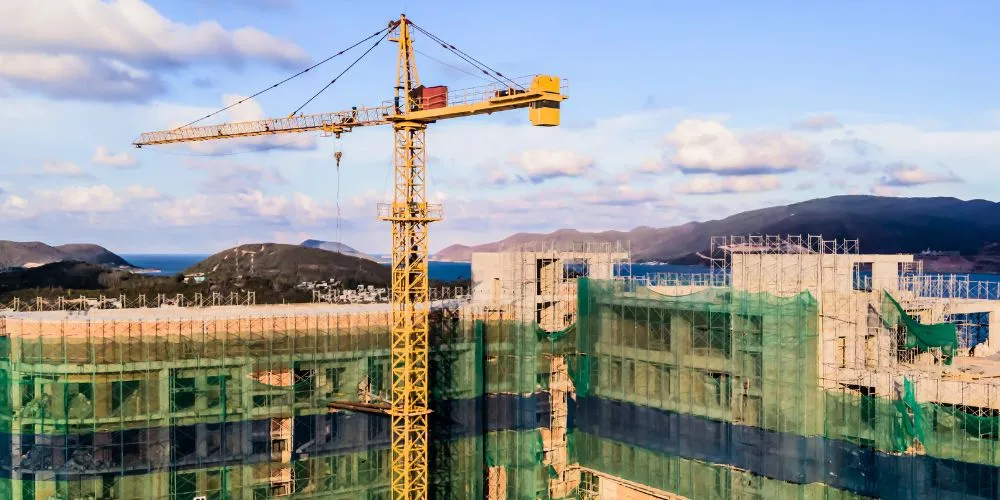Geospatial technology has emerged as a transformative force in the construction industry, revolutionizing how projects are planned, executed, and monitored. In a rapidly evolving world, where construction projects are becoming more complex and site-specific, the integration of geospatial technology is paramount. This comprehensive exploration delves into geospatial technology in construction, uncovering its significance, applications across the construction sector, and its transformative potential for creating a more precise, efficient, and successful construction landscape.
The Significance of Geospatial Technology in Construction
Geospatial technology represents a groundbreaking shift in how construction professionals approach project management and execution. These systems provide construction teams with the tools and insights to make well-informed decisions based on precise location data. This shift towards more accurate and data-driven construction carries substantial implications, from improved project planning to enhanced safety and sustainability.
Precision and Site Understanding
One primary benefit of geospatial technology is enhanced precision in site understanding. Construction professionals can obtain detailed and up-to-date information about the project site by leveraging Geographic Information Systems (GIS), Global Positioning System (GPS), and remote sensing technologies. It includes topography, soil composition, existing infrastructure, and environmental factors. This newfound level of precision not only improves project planning but also minimizes costly surprises during construction.
Efficient Resource Allocation
Geospatial technology enables efficient resource allocation by providing real-time information about site conditions and project progress. Construction teams can optimize equipment deployment, materials logistics, and workforce scheduling based on accurate location data. It leads to cost savings, reduced project delays, and improved overall project efficiency.
Safety and Risk Mitigation
Safety is paramount in construction, and geospatial technology is critical in risk mitigation. Construction professionals can identify potential safety hazards by analyzing site data and implementing preventive measures. This proactive approach reduces accidents and ensures a safer working environment for construction teams.
Techniques in Geospatial Technology in Construction
Geospatial technology in construction encompasses various techniques and tools to enhance project management and execution.
Geographic Information Systems (GIS)
GIS is a foundational technology that allows construction professionals to map, analyze, and visualize location-based data. Construction teams can create detailed maps of project sites, overlaying information about land use, utilities, zoning regulations, and environmental factors. This information is invaluable for site selection, feasibility studies, and environmental impact assessments.
Global Positioning System (GPS)
GPS technology provides accurate positioning and tracking capabilities, enabling real-time asset and equipment monitoring. Construction teams can track the location and movement of vehicles, machinery, and personnel on the construction site. It improves resource allocation and enhances safety by ensuring that equipment is operated within designated zones.
Remote Sensing
Remote sensing technologies, such as aerial drones and satellite imagery, offer a bird’s-eye view of construction sites. These technologies provide high-resolution images and data, allowing construction professionals to monitor project progress, assess site conditions, and detect changes or issues that may require immediate attention.
Applications of Geospatial Technology in Construction
Geospatial technology finds application across diverse sectors within the construction industry, each reaping the rewards of enhanced precision, efficiency, and project success.
Civil Engineering and Infrastructure
In civil engineering and infrastructure projects, geospatial technology is indispensable. Construction teams can use GIS and GPS to plan road networks, bridges, tunnels, and utility installations. Accurate site data helps engineers design structures resilient to natural disasters and environmental challenges. Additionally, real-time GPS tracking of construction equipment ensures that projects stay on schedule and within budget.
Building Construction
In building construction, geospatial technology aids site selection, design, and project monitoring. GIS tools help architects and developers assess the suitability of potential building sites, considering factors like land use regulations and environmental impact. GPS tracking ensures that materials are delivered to the correct location during construction, reducing delays and logistical errors.
Environmental Conservation
Geospatial technology plays a crucial role in environmental conservation projects. Construction teams can use remote sensing data to monitor ecosystems, track deforestation, and assess the impact of construction on wildlife habitats. This information guides sustainable construction practices, minimizing environmental damage and promoting responsible land development.
Challenges and Ethical Considerations
While adopting geospatial technology holds immense promise, it also presents challenges and ethical considerations that necessitate careful consideration.
Data Privacy and Security
Collecting and storing location-based data raises concerns about data privacy and security. Protecting sensitive project information from unauthorized access or cyber threats is essential. Construction companies must implement robust data encryption, access controls, and data management protocols to safeguard location data.
Ethical Land Use
Geospatial technology must be used to assess and select construction sites ethically. Construction professionals should consider the impact of their projects on local communities, ecosystems, and cultural heritage. Ethical land use practices ensure that construction projects contribute positively to the areas in which they are developed.
Access and Equity
Ensuring equitable access to the benefits of geospatial technology is crucial. Efforts must be made to provide training and access to these tools to all project stakeholders, irrespective of their technical background or resources. It promotes inclusivity and allows a wider range of professionals to leverage the advantages of geospatial technology.
The Future of Geospatial Technology in Construction
Geospatial technology is poised to assume an even more substantial role in shaping the future of construction project management, fostering precision, efficiency, and sustainability.
3D Mapping and Augmented Reality
Integrating 3D mapping and augmented reality into geospatial technology will revolutionize project planning and execution. Construction professionals can visualize projects in three dimensions, allowing for more accurate design and construction. Augmented reality tools will enable on-site workers to overlay digital information onto the physical world, improving construction accuracy and reducing errors.
Predictive Analytics and Artificial Intelligence
Applying predictive analytics and artificial intelligence to geospatial data will enhance decision-making in construction. AI algorithms can analyze historical project data, weather patterns, and site conditions to predict potential project risks and recommend preventive measures. This proactive approach will reduce project delays and cost overruns.
Sustainable Construction
Geospatial technology will play a vital role in promoting sustainable construction practices. Construction professionals will use location data to optimize building designs for energy efficiency, minimize environmental impact, and ensure that projects comply with sustainability standards and regulations. It contributes to a more environmentally responsible construction industry.
Conclusion
Geospatial technology in construction is not merely a tool but a transformative force that enhances precision, efficiency, and project success. Its significance lies in its capacity to provide construction professionals with accurate location-based data, empowering them to make informed decisions that lead to better project outcomes. As geospatial technology evolves, ethical considerations, data security, and equitable access must guide its development and deployment.
The future they envision is one where construction projects are executed with unmatched precision, efficiency is the norm, and the construction industry leads the way in sustainable and responsible land development. Geospatial technology is the cornerstone of a future where construction projects are successful and contribute positively to the environment and communities they serve. With geospatial technology, the construction industry is poised to build a better world—one project at a time.










